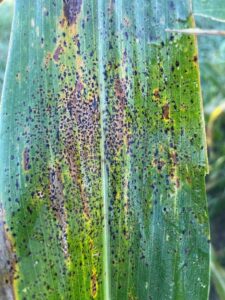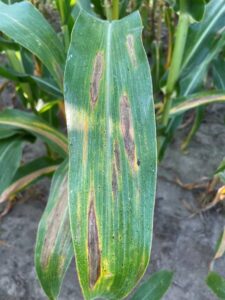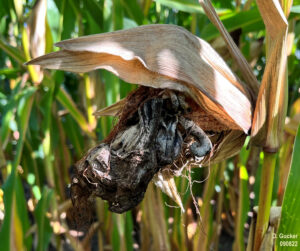Illinois Crops Update 9/9/2022
Nick Seiter, Extension Field Crops Entomologist, University of Illinois
Second-generation bean leaf beetle adults have been emerging over the last few weeks; pod scarring has been an issue in some areas over the last two years. Consider scouting your R6 beans, particularly in fields that you expect to mature late. Remember it takes a lot of beetles and a lot of this sort of damage to reduce yield and/or quality. The beetles do not directly feed on the seed, but their feeding can allow moisture into the pods as they start to dry down.
Emerson Nafziger, Professor Emeritus and Agronomy Extension Specialist
There have been some hints that the August 1 estimate of the 2022 Illinois soybean yield (66 bushels per acre) might decrease, most fields have maintained their canopy color well so far, which is a sign that they are filling pods at high rates. Loss of leaf color is beginning and may be happening earlier in drier area where the crop has remained under some level of stress. In an article in Crop Central posted on September 8 (link) I discuss this and a few other pieces of the soybean “puzzle” as maturity approaches.
Talon Becker, Commercial Agriculture Extension Educator, Southern IL
In southcentral Illinois, leaves early corn and beans are starting to senesce, with some farmers in the area predicting they will be starting their harvest in 2-3 weeks. A quick check of some of our earliest corn at the Ewing Demonstration Center (EDC) showed some nice ears with near full kernel set to the tips. We didn’t find anything at black layer quite yet, but our early corn will probably get there sometime next week. The relatively dry past 30 days has likely helped some in speeding up the progress toward crop maturity. At EDC, we are at 0.71″ for the past 30 days.
Russ Higgins, part-time Commercial Agriculture Extension Educator, Northern IL
Another dry week for much of northeastern Illinois. In some fields the onset of crop maturity and loss of green color in both soy and corn has been dramatic over a one-week period. For much of this region there has been little talk of corn leaf diseases. This is likely due to unfavorable conditions for leaf disease establishment earlier in the growing season and the unprecedented corn acres treated with fungicides. Regardless of fungicide treatments, it appears that disease pressure is building late season. While no management practice would be suggested at this stage of crop maturity, a trip to your corn field while plants still have green tissue makes leaf disease identification and evaluation easier. What you learn could be valuable for future hybrid selection and crop management decisions in future years.
What to look for?
- What diseases are present? (Gray leaf spot, Northern leaf blight, Tar spot, Rusts)
- Where in the canopy is the disease present?
- Take varietal notes, and compare the presence or absence of disease with a variety of disease ratings.
- If a fungicide was applied, a visit to the field would allow farmers to evaluate the efficacy of the treatment.
- Compare fungicide treated areas with non-treated areas. (best case scenario, non-treated strips within the same field or better than nothing, adjacent non-treated fields)


Doug Gucker, Local Foods Small Farms Extension Educator, East-Central IL
The past week, the rainfall varied from a few hundredths to over 3 inches. Crop maturity is advancing with soybean fields in the R6 to R7 stage and corn fields in the R5 to R6 stage. Early maturity soybean fields are turning yellow and early planted corn fields are testing in the low 30% to upper 20’s% range. Smut is evident on stalks and ears in fields that experienced severe weather during the growing season.

Nathan Johanning, Commercial Agriculture Extension Educator, Southwestern IL
We had been fairly dry until last weekend when our area received rainfall from 1″ to in some locations over 4″ of rain. Crops are progressing, but most all fields are still green across the landscape. Cooler temperatures with the rain have slowed down the start of any dry down. Hopefully, some continued warm sunny days will keep our crops drying down and maturing!





